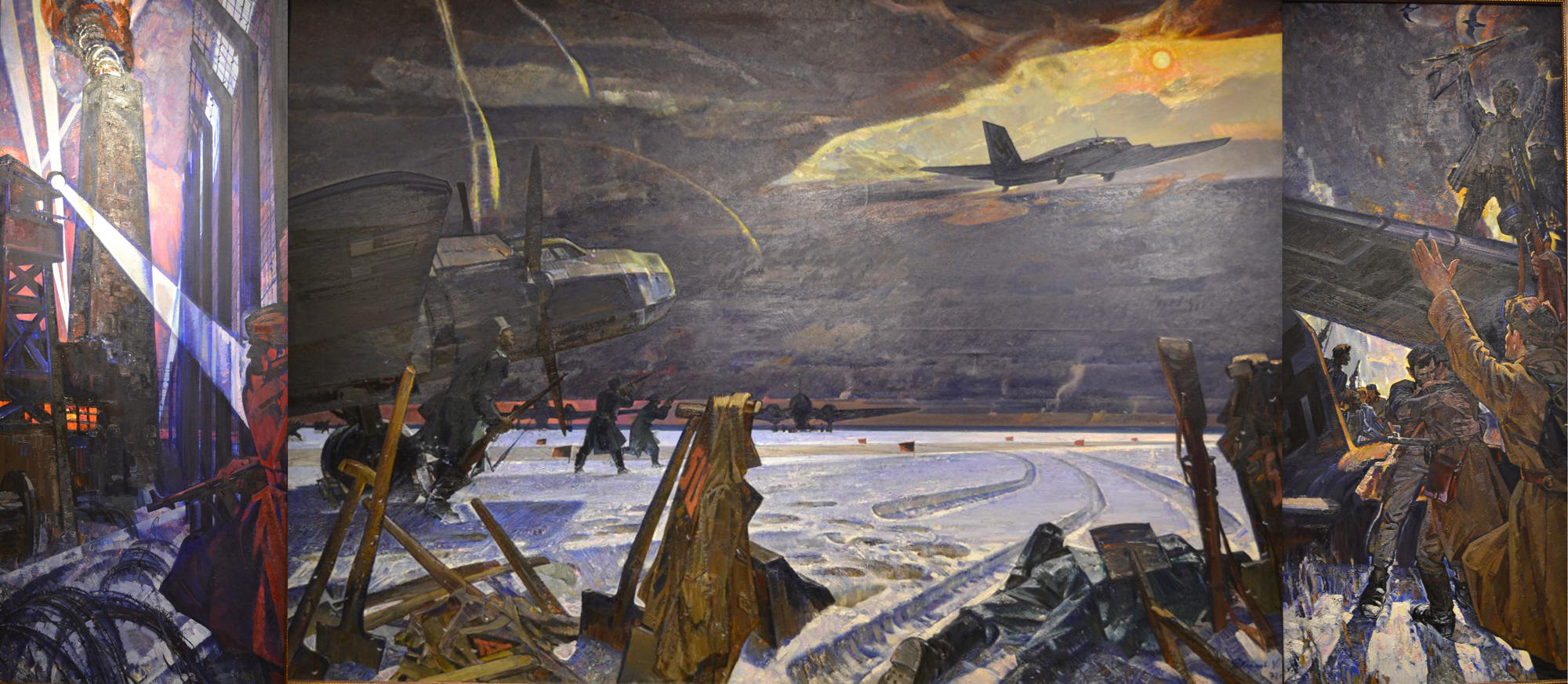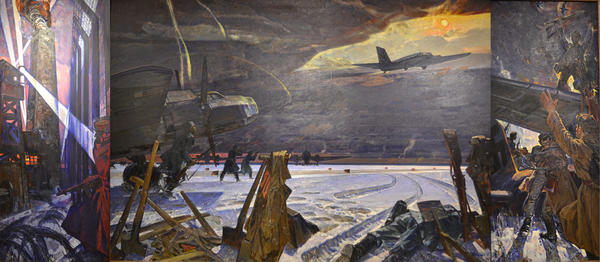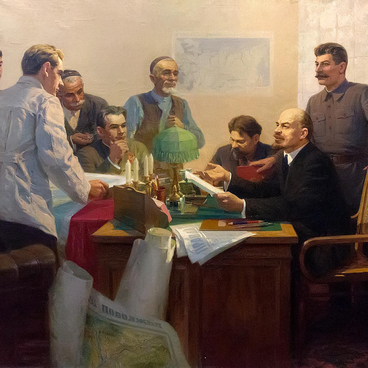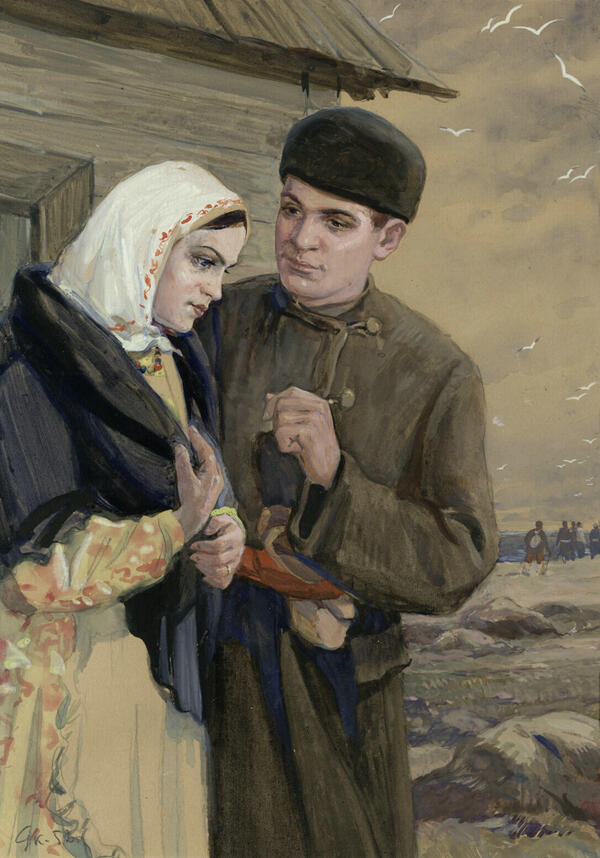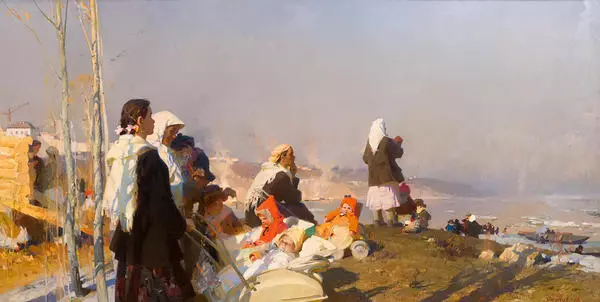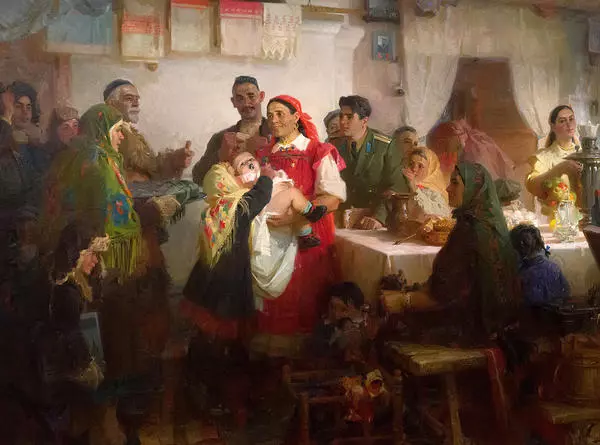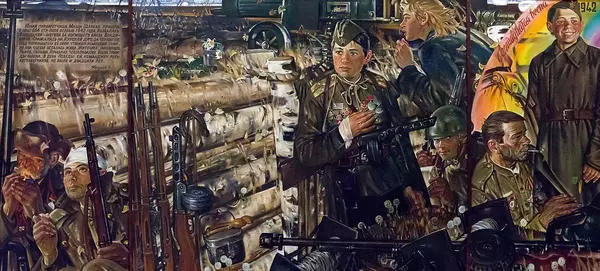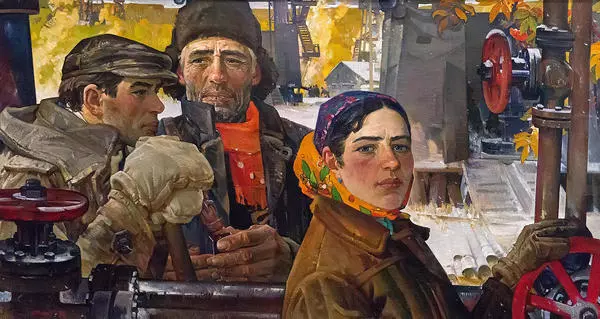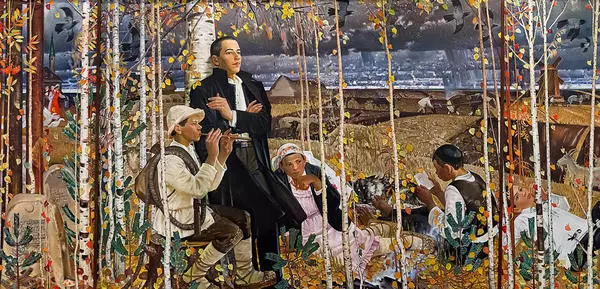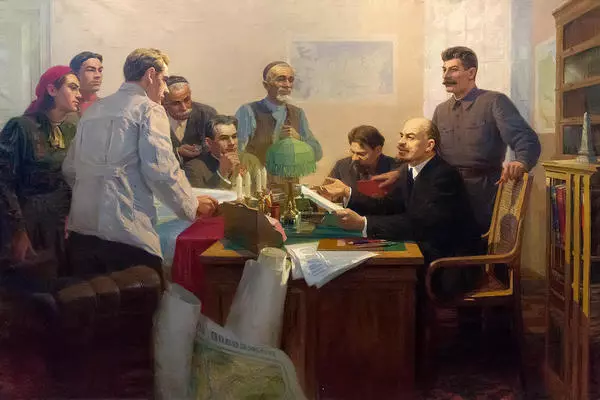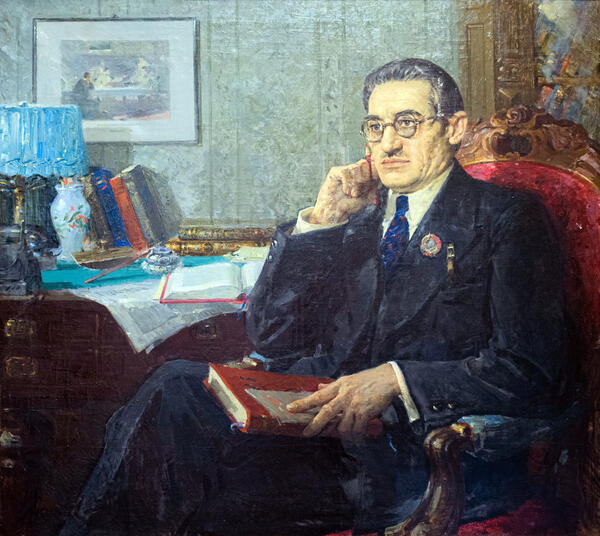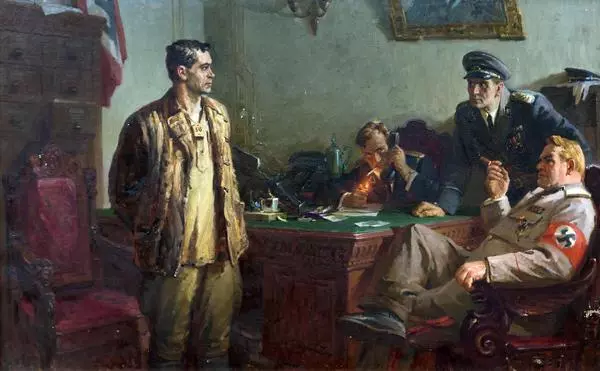On 13 July 1944, the aircraft of Senior Lieutenant Mikhail Devyataev was downed near Lwow. The pilot survived but became a prisoner of war. Then it was a concentration camp: watchtowers with machine-guns, a moat, barbed wire, high-voltage electric power, sentries with dogs. On 8 February 1945, a group of prisoners led by Devyataev managed to take over a bomber and escape from the camp.
This event served as a basis for the painting by Kharis Yakupov Flight to Freedom. Feat of the Hero of the Soviet Union Mikhail Devyataev. The artist had chosen a triptych for a reason: this form allowed him to thoroughly describe preparation for the feat, its culmination and completion. Evil world of a concentration camp, full of violence and brutality, is shown at the left part. A huge chimney of the crematorium, a steep wall of the building-well, blood red window spots create a depressing feeling.
The central part of the triptych demonstrates breakthrough, destruction of this violence chain - a flight to freedom. A bomber, taken over by prisoners, gets in the air in front of Nazis. Arranged on the diagonal composition with the aircraft taking off, black figures of running and shooting up Germans, contrasts of cold and warm colours of sky and earth, - all of this creates a special dynamism and tension. The artist managed to describe the event almost without main characters: he relegates the figures of stalkers to the background and doesn’t portray escapees at all.
The right part of the triptych is infused with paphos of the victory. Emotional tension is finally resolved in depiction of the aircraft reaching its homeland. The artist in the search for “fact of life” uses a subdued manner: the forms are extremely compiled, plasticity of the figures is hard, the contour is graphic, the colour is based on contrast mix.
As usual, spiritual power of the heroes, their amazing courage, resilience and unbowed characters are of major concern to Yakupov, but not narrating in itself and reporting on the event. Here two worlds are juxtaposed to each other, good and evil, where the good prevailed even when physical strength is on the enemy’s side.
This event served as a basis for the painting by Kharis Yakupov Flight to Freedom. Feat of the Hero of the Soviet Union Mikhail Devyataev. The artist had chosen a triptych for a reason: this form allowed him to thoroughly describe preparation for the feat, its culmination and completion. Evil world of a concentration camp, full of violence and brutality, is shown at the left part. A huge chimney of the crematorium, a steep wall of the building-well, blood red window spots create a depressing feeling.
The central part of the triptych demonstrates breakthrough, destruction of this violence chain - a flight to freedom. A bomber, taken over by prisoners, gets in the air in front of Nazis. Arranged on the diagonal composition with the aircraft taking off, black figures of running and shooting up Germans, contrasts of cold and warm colours of sky and earth, - all of this creates a special dynamism and tension. The artist managed to describe the event almost without main characters: he relegates the figures of stalkers to the background and doesn’t portray escapees at all.
The right part of the triptych is infused with paphos of the victory. Emotional tension is finally resolved in depiction of the aircraft reaching its homeland. The artist in the search for “fact of life” uses a subdued manner: the forms are extremely compiled, plasticity of the figures is hard, the contour is graphic, the colour is based on contrast mix.
As usual, spiritual power of the heroes, their amazing courage, resilience and unbowed characters are of major concern to Yakupov, but not narrating in itself and reporting on the event. Here two worlds are juxtaposed to each other, good and evil, where the good prevailed even when physical strength is on the enemy’s side.
